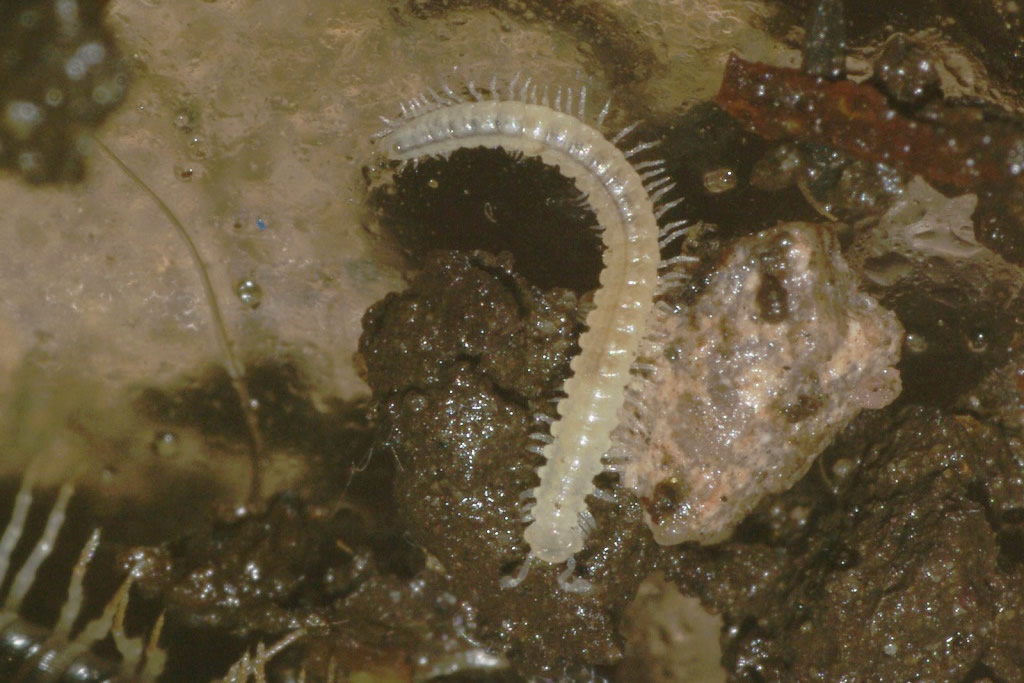Brachychaeteuma bagnalli Verhoeff, 1911
Status:
- GB IUCN status: Least Concern
- GB rarity status: Nationally Scarce
ID Difficulty
Identification
This species is identical in appearance to Brachychaeteuma bradeae, with eyes comprising about three poorly pigmented ommatidia. The two can only be separated by dissection of male gonopods (female and immature specimens cannot be identified).
However, the two taxa have very variable gonopods and may yet prove to belong to a single, variable species (Blower, 1986).
Distribution
Although not common, this species appears to be widespread in Ireland, northern England and southern Scotland. Its range overlaps with that of B. bradeae in north west England and southern Scotland. This more westerly distribution of B. bagnalli in Britain and Ireland fits a distribution pattern recognised by Kime (2001) as being ‘marginal between Atlantic and Central’ in Europe.
Habitat
Analysis of the habitat data from the recording scheme suggests that this is a garden species as it shows a strong association with cultivated sites in urban and suburban locations. In Britain and Ireland it appears to live in the litter and upper soil layers in these synanthropic sites and it has been found in similar situations in the suburbs of Brussels. Elsewhere in Europe this species has been collected from caves in Westphalia, Germany (Schubart, 1938) and in limestone areas of the Mosan District of Belgium (Kime, 2004). An animal discovered near Lyons, France probably also originated underground as it was found during filtration of spring water (Geoffroy, 1992). Kime (2004) noted that the millipede occurs in deep galleries in these caves, not just at the entrance, and it is apparently well-adapted for its cavernicolous existence.
Phenology
Most observations of adults of this annual species occurred in winter and spring but individuals have been recorded in June. Even in sub-zero temperatures, it can be collected from the underside of surface debris such as logs and stones.
This species account is based on Lee (2006).
Links
MilliBase - Global catalogue of Millipedes: https://millibase.org/aphia.php?p=taxdetails&id=935121




